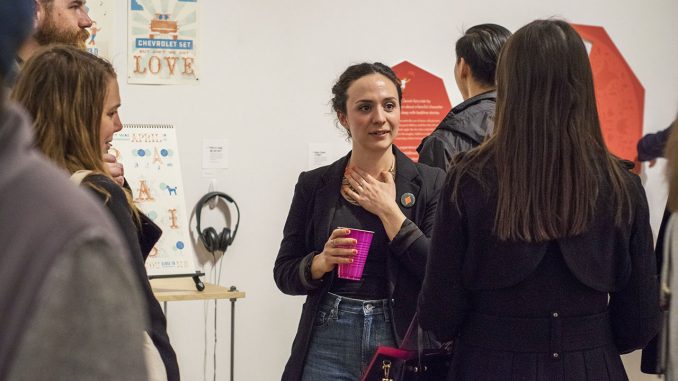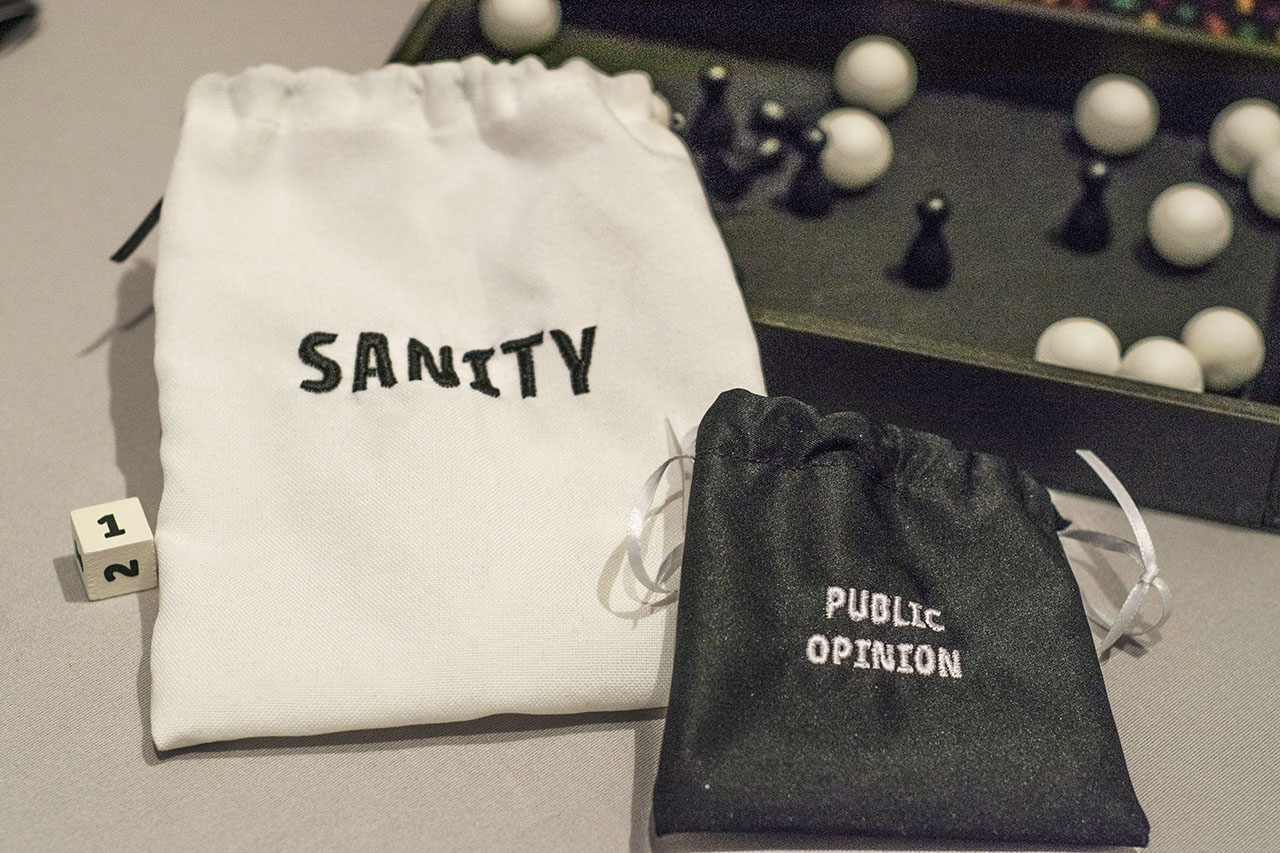
In one of Ting Chou’s pieces in the graphic and interactive design MFA thesis exhibit, she focused on the idea of “leftover women:” a derogatory term used in Asian cultures to refer to women who aren’t married by their mid-20s.
Chou, an international student from Taiwan, created a poster that advertises cereals representing four leftover women, each varying in socioeconomic and educational status.
The poster is made with light yellow tones and soft, round lines that Chou uses for many of her pieces. But each cereal has its own individual color scheme for the women.
“That’s kind of my experience because I am over 27, so I use a lot of inspiration from my life and what I face,” Chou said.
Last week, Chou, alongside three other graduating graphic and interactive design MFA students — Alyssa Hamilton, Jenny Kowalski and Craig Moscony — presented “Four of a Kind,” a group showcase in Temple Contemporary.
The exhibit concluded a string of shows that began in February for each concentration in the MFA program. Unlike other students in other concentrations like painting or photography, Hamilton said the four graphic and interactive design students all displayed their work in a single exhibit.
On Friday, the artists held a reception in the gallery to show their work and talk with attendees.
Although each student was given a separate space in the gallery, Kowalski said they developed an overall theme to tie the rooms together. The four students centered the exhibit around different suits of cards that each of them designed. It was shown in the exhibit along with their individual work.
Each artist displayed about 10 to 12 projects they created during the past two years. Each individual’s projects were spawned from the same prompts.
“All of the projects we do for our class have a prompt of some kind,” Kowalski said. “So for our thesis classes, we’re given a prompt like…‘authenticity’ or ‘bias.’”
The designers were given the freedom to make whatever inspired them from a single word.

In the designer’s thesis classes, they’re given a simple physical concept, like an educational game, a calendar or a toy, to inspire their work.
Despite deriving inspiration from similar prompts, they all draw from different influences that distinguish their work. Chou said she was motivated to bridge different cultures and discuss human relationships in her work.
“My work has really centered around my cultural background and my personal experiences in my years here,” Chou said. “I’m trying to bring Eastern culture to a Western audience.”
Even though Chou focuses on serious subjects, her work is playful.
“I don’t want to say my design is cute, but more cheerful,” Chou said. “I want to cheer people up even though I’m talking about something really serious.”
In contrast, Moscony said his art is inspired by more abstract, fantastical elements.
“I don’t know if I have that many themes that recur, but I do use nature and sci-fi and weird animals,” Moscony said.
Half a wall of Moscony’s showroom featured a large, horizontal poster of “the most common aliens as described by abductees.” The poster gives the “facts and figures of abduction” for three aliens, like their height and level of intelligence.
Kowalski emphasized that graphic design portfolios may not contain obvious, recurring themes compared to the portfolios of artists who work with other media.
“[Fine artists] have a body of work and one main thing that they do,” Kowalski said. “But as designers, we’re so focused on the prompt and the client and the specific project, that we can take it a lot of different ways.”
Kowalski displayed a self-authored children’s book, “My Life Story By A. Rock,” about friendship and geology. The book is told from the perspective of a rock going through geologic time periods. The purpose was to show how friendships grow and change, just like Earth.
As an undergraduate at the University of Dayton in Ohio, Kowalski was a part of the Rivers Institute, a university initiative that works with the surrounding community in Dayton to preserve its watershed, according to its website.
Kowalski used her knowledge of water and rocks from her time at the Rivers Institute to create a children’s book with a positive message.
“Children’s books are really informative,” Kowalski said. “The books that you read and you love when you’re young, they really shape you as a person. I really wanted to create something that had good development and try to put out positive messages for children.”
The MFA program gave Kowalski and her peers the knowledge to create something that matters to them.
For the graduate students who’ve spent the last two years perfecting their craft, it’s exciting to finally have their work displayed to family, friends and professors.
“After [the exhibit] was installed, we all felt incredibly proud of our work and what we were able to accomplish in two years,” Kowalski said. “After we put it together, we all just kind of sat around and asked, ‘Well, what now?’ It really takes over your life for two years.”



Be the first to comment